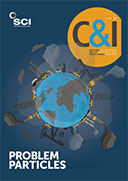Colony-founding queen bees are 26% less likely to initiate a colony after exposure to the neonicotinoid thiamethoxam. Mathematical modelling shows that this leads to a 28% increase in the likelihood of population extinction, according to researchers at Royal Holloway University of London (RHUL), (Nature Ecology & Evolution; doi: 10.1038/s41559-017-0260-1). Previous studies (Nature Scientific Reports; doi: 10.1038/s41578-017-09752-x) by other researchers in the same department had found no impact of the insecticide on mature colonies of the same species, prompting the current research into the earlier stage of the bees’ life-cycle.
When a colony of bumble bees reaches its peak size in the summer, many males and a few new queens fly away and mate. Once mated, the male dies leaving the queen bee alone to hibernate for six to nine months before starting a colony in the spring. Mark Brown, professor of evolutionary ecology and conservation at RHUL explains: ‘This is the most stressful part of the bee’s lifecycle. It is energy-intensive and the queens face a lot of environmental stress as well as predators, without the protection afforded by scores of worker bees.’
Previous work by Brown had shown a significant negative impact on the number of colonies produced by queen bees when two natural stress factors were present – hibernation and the bee parasite Crithidia bombi. So, the researchers looked at these in combination with thiamethoxam, a common insecticide used for oilseed rape crops before the EU moratorium on the neonicotinoid in 2013.
In laboratory experiments, researcher Gemma Baron exposed Bombus terrestris queen bees to field-levels of the insecticide. She inoculated half of the 319 queen bees with the parasite and kept the other half parasite-free, and put them in a fridge to hibernate. Half of the queens were kept in hibernation for six weeks to mimic a mild winter, the other half for 12 weeks to mimic a harsh winter.
At the end of each hibernation period, the surviving bees were given food for three days to recover and the bees in the pesticide group were provided with a syrup containing 2.4ppb thiamethoxam for 14 days. Next, Baron fed the bees in the various groups with sugar water and pollen, and for the next 10 weeks she tracked the number of eggs laid.
Brown explains that the experimental conditions were deliberately chosen to be conservative. The dosage of the insecticide is lower than the bees would be exposed to from pollen stores in the nest and there are no additional parasites present nor any environmental fluctuations.
However, the lab and modelling results should be treated with caution, says Syngenta’s Peter Campbell. ‘The lack of proper replication of the egg laying experiment does not inform us of the natural variability of the egg laying response and the hibernation periods used are substantially lower than the normal hibernation periods of bumble bees in the wild,’ he says.
In addition, Campbell argues that the mathematical model used was based on a probabilistic approach that does not take account of environmental and biological factors as well as ecological feedback mechanisms that may regulate bumble bee populations in the field.





